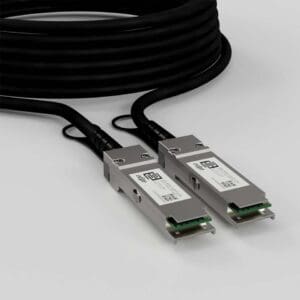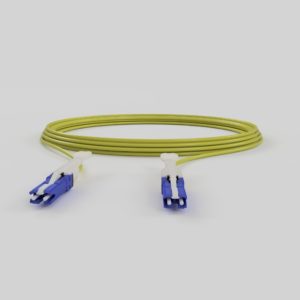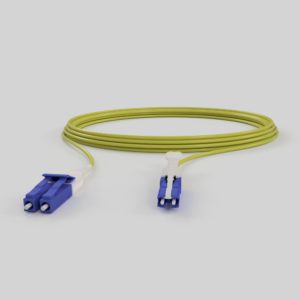The CS Fiber Connector Patch Cables are an evolution in optical connectivity where CS connectors feature a 40% size reduction when compared to LC duplex connectors at the same time delivering increased performance. The CS Fiber Connector smaller footprint allows two of them to be fitted within a QSFP/QSFP-DD/OSFP transceiver module, which cannot be accomplished by the LC connectors, therefore the CS connector’s footprint allows to double the port density on switch/router units and allows to make higher density connections on patch panels which can significantly reduce space requirements and reduce rent cost in colocation Data Centers. These compact connectors introduce easy handling push-pull tab to optimize user experience in ultra-dense interconnect and patching applications. CS Connectors are standardized by the CS Consortium.

The CS Fiber Connector Patch Cables are available in OM3, OM4, and OM5 Multimode Fiber (MMF), as well as Single-Mode Fiber (SMF) UPC and Single-Mode Fiber (SMF) APC variations. Connectors have two cylindrical, spring-loaded 1.25mm ferrules similar to LC connectors, within a single housing, but the CS connector’s two ferrules are pitched at 3.8mm apart (standard LC duplex ferrules are pitched 6.25mm apart), which is the minimum possible spacing to meet the TOSA and ROSA optics requirement. Edge to edge size for CS connectors is 7.85mm, while for standard LC duplex connectors it is 13mm.
Some of the typical applications for CS Fiber Connector Patch Cables are in Data Center environment for patch connections to aggregate multiple 200G FR4 signals 200G-QSFP56-2.1 from server side NIC (Network Interface cards) towards 400G 2FR Data Center switch 400G-QSFP-DD-2.2, for such scenario CS-LC-OS2-UPC-DX-B CS patch cable need to be used. Another typical scenario would be to interconnect 400G QSFP-DD PAM4 infrastructure with legacy 100G QSFP28 NRZ infrastructure. As QSFP-DD ports are backwards compatible with QSFP28 modules, we can use 2x100G-QDD-10 optical transceivers which support 2x100G Ethernet, NRZ modulation and have double CS connectors and make interconnection to two 100G-QSFP28-10 transceivers in our 100G legacy infrastructure. For this connection we need to use CS-LC-OS2-UPC-DX-B CS patch cable. Lastly another popular use case for CS patch cables are 100G DWDM QSFP28 PAM4 scenario where we have special 100G DWDM QSFP28 transceivers (DWDM2-QSFP28-80) which have 2 independent DWDM wavelength (Tx1/Tx2 and Rx1/Rx2) each working at 50G PAM4 rate and module has dual CS connector. In this scenario we need to use CS-LC-OS2-UPC-DX-A CS patch cables.
 X2121A5M-N
X2121A5M-N


